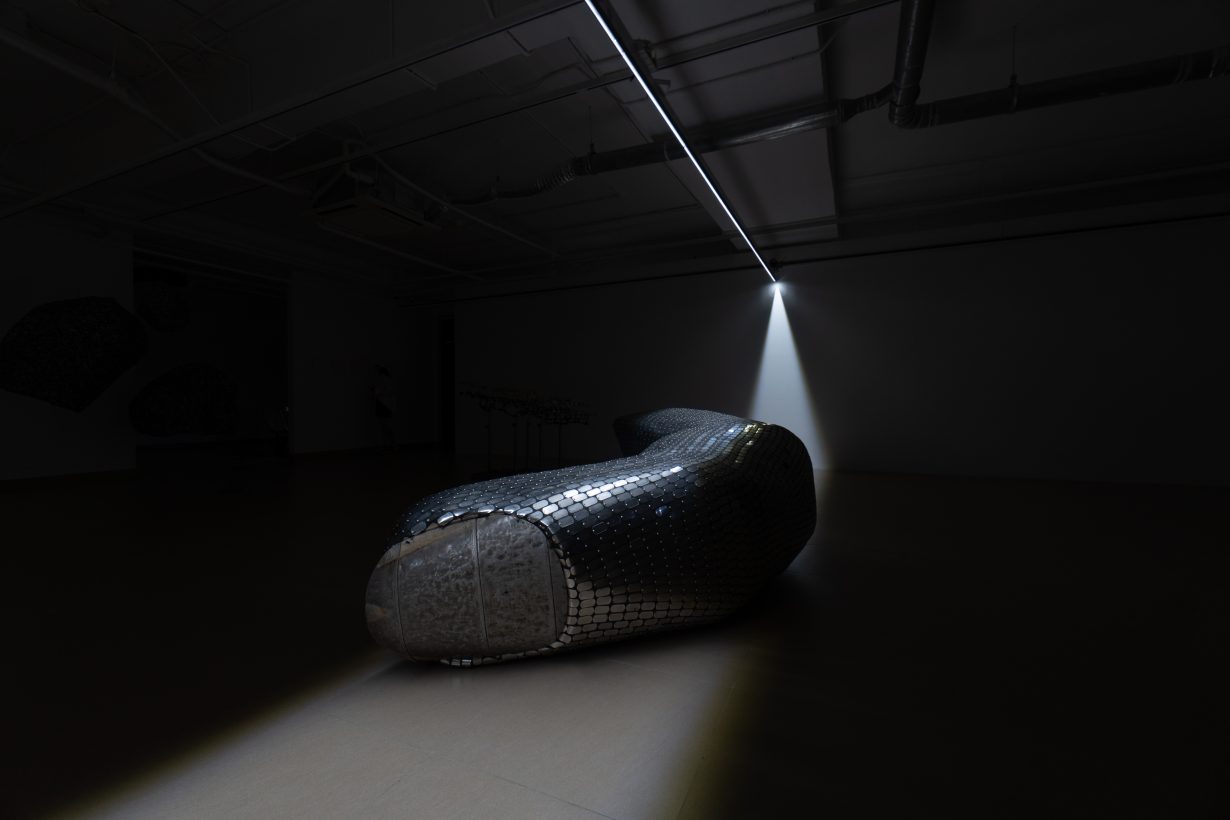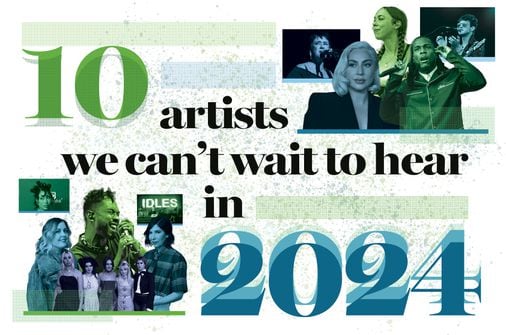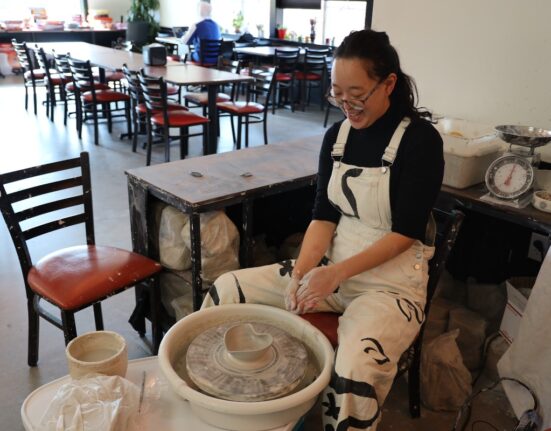White Noise at Nguyen Art Foundation asks how human subjectivity, such as gender and national identities, are framed
This exhibition draws on the body and its constituent parts to question how human subjectivity, such as gender and national identities, are framed. A ‘medical scanner’ – which is actually a fluorescent tube propelled by an automated system of wheels attached to the ceiling – gives the show an eerie clinical atmosphere, as certain objects emerge, momentarily illuminated, before receding again into darkness. The lighting design reflects the darker themes explored in the show, which includes how contemporary Vietnamese artists use the hybridised body (combined with machines or animals) to revisit traumatic experiences and propose alternative understanding of social realities.
In Lai Dieu Ha’s Hurt in here (2011), the traumatised body is compared to that of a suffering animal. Sheets of dried pork-skin are ironed until their surfaces blister, then soaked in water and stacked inside a Plexiglass cage. In this compressed state, the pig skin closely resembles human skin, alluding to the suffering and oppression common between the two species – an idea explored in her harrowing performance Fly Off (2010), in which she ironed pig bladders and then her own skin.

Self-mutilation and rebellion are also present in Trần Tuấn’s Forefinger (2021), a sculpture of a giant index finger clad in stainless-steel identification tags from American soldiers during the Vietnam War. To escape military duties, his father and uncles had chopped off their forefingers so they could no longer pull gun triggers. The detached finger, decorated to look like a piece of high-end furniture, also alludes to the materialistic values of capitalism, and the Western ideological forces involved in the war in Vietnam.
The body is also a site of memory and collective experience. In Tongue (2021), artist Nguyen Phuong Linh creates composite images of salt fields and prints them on a magenta-coloured PVC slab in the shape of a tongue. She had worked with salt farmers for a project in 2009, but over the years she has witnessed their disappearance, as they moved to cities in search of better livelihoods. In her work, the visceral experience of saltiness is evoked on the viewer’s tongue, creating a physical connection to the lost salt fields. Tears, of course, are also salty – the work has an elegiac melancholy for these lost landscapes and ways of life.
Another kind of loss is explored in Dinh Q. Le’s Adrift in Darkness (2017), comprising three hanging structures that are made from rattan and strips of photograph paper woven together. Printed on the paper are images of refugees escaping from Africa and the Middle East. Because the images are cut into strips woven together, the bodies and faces of the refugees are combined and intermingled, suggesting a collective identity that obscures the individual story. In any case, the collective story is a tragic one of being cast adrift. Suspended from the ceiling, the sculptures resemble three lonely rocks floating in the dark emptiness of space.
White Noise at Nguyen Art Foundation (Nam Long campus), Ho Chi Minh City, through 20 January







